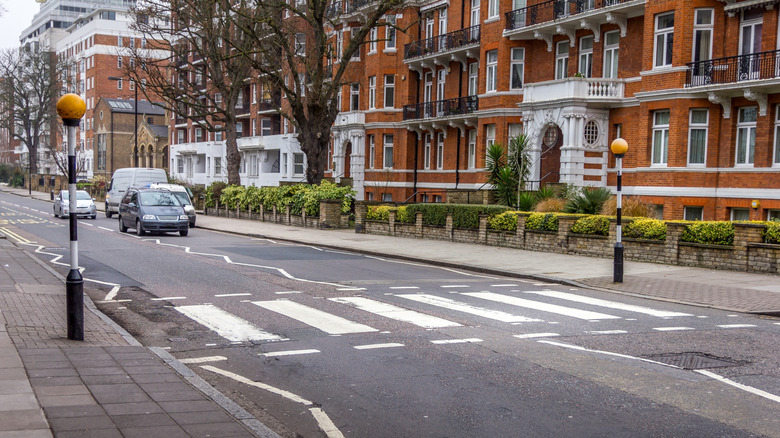Why Do Roads In England Have Zig-Zag Lines?
As anyone who takes a driver's ed course or has passed the licensing exam knows, the white and yellow lines on every road have meaning, and knowing how to read them is a hallmark of safe driving. They indicate which direction traffic is moving and how many lanes are going that way, when it's safe to pass and change lanes, the edge of the pavement, and more. But what do roads look like when you drive in another country?
It all depends on where you're traveling. If you're driving in Canada, for example, road lines look very similar to those in the U.S. In some parts of Australia, all road lines are in yellow to make them stand out in the snow (and yes, it does snow in Australia!). In Mexico, you may see a dashed white line on the side of the road that appears to mark the shoulder, but instead it indicates a "half lane" that is used for slow-moving drivers. Finally, in England, it's hard to miss the odd zig-zag road markings that appear in both white and yellow paint. Just like road markings around the world, they are used to send a message to the driver about pedestrian crossings, road hazards, and more.
What do white zig-zag lines tell drivers?
Exactly what those zig-zag lines mean depends on where they're located and what color they are. White zig-zag markings are used to indicate crosswalks, or crossings, as they are called in England. The distinctive design tells drivers that parking or passing other vehicles is not allowed, and to be on the lookout for pedestrians. Crosswalks in England also have fun names, like a zebra crossing for what we traditionally call a crosswalk, or "pelican" for a crosswalk that is pedestrian-light controlled.
The zig-zag line typically comes to an end at a dashed line before the crosswalk, which is where the driver is meant to stop. If you're walking around London or Stratford-Upon-Avon, you should stay within the traditional crosswalk markings. The areas marked with zig-zag lines are for cars, not pedestrians. And remember, they drive on the left-hand side of the road in England, so Americans need to be extra-vigilant about watching out for pedestrians.
Yellow zig-zag lines are used differently
You may also see yellow zig-zag lines on the pavement. Just like how white and yellow lines have different meanings on the road here in the U.S., yellow zig-zags send a different message. Rather than denoting a crosswalk, these are used to tell drivers that they are near a hospital, school, police station, or fire station, and show that you are not allowed to park or wait in that area. There is sometimes signage to tell you if there are particular hours when these rules are in place. If so, you may stop or park in that area outside of those hours. Parking within the zig-zags during those warned hours may result in a fine. Similar markings are also used in residential areas to illustrate no parking zones.
Finally, you may see yellow or white diagonal stripes on the road that look similar to the zig-zag marking used elsewhere. Rather than designating a no-parking zone, these stripes warn of an approaching bend in the road, an intersection ahead, or a crosswalk.


